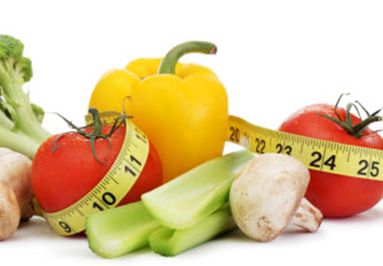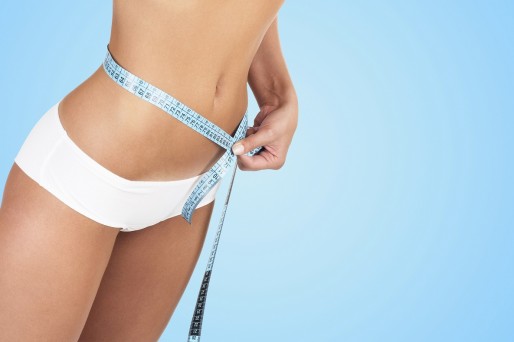 How many of you out there know someone who is trying out a new cleanse, detox or diet? Perhaps you’re doing this yourself. Be honest — no show of hands needed. I am by no means going to bash any of these diets, cleanses or detoxes, but I’m instead going to try to bring our focus back to the bigger picture. Why are you trying to lose weight? What are you goals? Is it to be healthier? To feel good? Do you want to run a marathon? Is it to feel better in your own skin? Is it to be the absolute best version of you that you can be? Whatever your reason may be, you must know that the essence of the actual weight loss is so much more than simply just saying out loud that you are going to eat less and exercise more. Weight loss is a commitment — a focused mind-body connected commitment — to make a change. (It’s a balancing act, just like we have heard so many times before. Once again, Dad was right, J. ) Here is the kicker: when the day of your beach vacation or dinner party or event rolls around, your commitment should not end. Why do you think so many health care professionals refer to weight loss as a “lifestyle change”? Because you actually have to change aspects of your life for the long haul to truly achieve success here.
How many of you out there know someone who is trying out a new cleanse, detox or diet? Perhaps you’re doing this yourself. Be honest — no show of hands needed. I am by no means going to bash any of these diets, cleanses or detoxes, but I’m instead going to try to bring our focus back to the bigger picture. Why are you trying to lose weight? What are you goals? Is it to be healthier? To feel good? Do you want to run a marathon? Is it to feel better in your own skin? Is it to be the absolute best version of you that you can be? Whatever your reason may be, you must know that the essence of the actual weight loss is so much more than simply just saying out loud that you are going to eat less and exercise more. Weight loss is a commitment — a focused mind-body connected commitment — to make a change. (It’s a balancing act, just like we have heard so many times before. Once again, Dad was right, J. ) Here is the kicker: when the day of your beach vacation or dinner party or event rolls around, your commitment should not end. Why do you think so many health care professionals refer to weight loss as a “lifestyle change”? Because you actually have to change aspects of your life for the long haul to truly achieve success here.
OK, so let’s be committed.
The next thing you have heard consistently when it comes to weight loss is to “eat in moderation.” Again, what the heck is moderation? What does it mean!? What if my interpretation of moderation is different than yours is? Then what? Well, it is safe to say that any good changes you make will create a positive impact, but you need to know what your goals are, what your plan is and, most importantly, how you will make it last. Small changes will lead to success. When you don’t try to drastically change and alter your current life all at once but instead learn how to make what you love fit into your life in a healthier way, your small changes will last. What happens when that three-day “master cleanse” of only drinking water or eating grapefruits ends? Some people say they feel rejuvenated post detox and then eat very healthy foods for the long run; if that is you, you are very lucky.
Moderation and baby steps are the goals and the purpose of this post, so I think awareness can go hand in hand with this, and of course, simplifying anything also really helps. Let’s start by being aware of just how much our bodies need in terms of portion sizes.
I like to tell my clients, friends or family members who have asked me for advice that our hands can truly tell us a lot about what our bodies need. Unfortunately for me, I have quite small hands. Truthfully, let your hands guide you into what portions are right for you. There are many portion size guides that use common kitchen or household items as references. I don’t know about you, but I do not bring a baseball or a set of dice out to eat with me to help guide me when needed.
- Your Palms: This is the size of your proteins, with the width of your palm mimicking the width of your protein choice as well. If you are a very active person, you may need to have two palm sizes at your biggest meal. The only time I don’t think this rule is as accurate is with lean fish. With fish, you may be able to have maybe a palm-and-a-half, especially if it is a very thin fish. When it comes to eggs, see how many shelled eggs can comfortably fit in one hand. That should be the right amount to use for your omelet or scrambled eggs.
- A Fist: A tight fist is your carbohydrate portion size. This is your whole wheat pasta or your brown rice — the size of a sweet potato that is right for you.
- Your Thumb: This is your fats. 1 thumb length should be your serving of oils, peanut butter or almonds (or other nuts of choice).
- The Cup of Your Hand: Your piece of fruit should fit comfortably into your hand without your fingers being stretched out, so that extra-large honey-crisp apple that fits into your hand when your fingers are really, really stretched out is more than one serving. The same goes for your grapes or fruit cup. The amount of fruit in the fruit cup should fit into that cup you make out of your hand.
- Two Palms: This is your veggies. Here I am going to allow you to be a little more lenient as your veggies are many times considered “free foods” — at least the non-starchy ones. When you cook your veggies, however, remember the portion size of your fats.
Your plate can also help you control your portions. Do you remember as a kid the princess or Power Ranger plates that were plastic and preportioned? Buy them again! Instead of the carbs being on that big side of the plate, make that your veggie portion. When you eat from smaller plates, you have less in front of you at once, and therefore, you will likely eat less but plenty. The same goes for eating from a bag vs. a preportioned snack. When you only have a certain amount, you will likely only eat that amount.
Still interested in a detox? Focus on eating your colors. The more colors, the more nutrients. Each color can play a role in detoxifying and nourishing your body.
Avoid processed and refined foods. Cutting these out of your diet and replacing them with naturally colorful fruits and veggies may be a detox enough for some.
Focus on your hydration. Do you drink things during the day that aren’t water? Do you hate water? Water needs to be your best friend, so make it fun.
- Instead of ice cubes, add frozen fruits — frozen mangoes, strawberries, blueberries, etc. These will add natural flavors to your water.
- Add lemon and lime together.
- Add lemon and lime and mint.
- Add fruit and mint.
- Cucumbers and fruits.
- Orange slices.
- Try cucumbers and mint or cucumbers, mint and the lemon and lime.
Learn to love water, and carry it with you all day long. This can be one of those small changes for you.
After all of this, are you ready to commit to yourself? Are you ready to start by making some changes to your portion sizes and really being aware of what you are eating? The purpose of this post is to make you realize that the things you love you do not have to give up, but in the right portion, everything can be enjoyed. That is moderation.


3 Comments
Interesting article with useful, helpful tips! Your guide for fruit, though, flies in the face of what I’ve been reading lately about the latest thinking on fruit. For example, this blog from the NYTimes – http://well.blogs.nytimes.com/2013/07/31/making-the-case-for-eating-fruit/ . What are your thoughts on their arguments?
Oh, also, my employer ran a nutrition contest (http://www.hesonline.com/colorfulchoices) that I found really interesting and useful – eating the colors may be a good simple method of concentrating on eating enough fruits and vegetables, not just detoxing.
MarneeKleinHi MarneeKlein – Thank you for your comment! I agree with the article you have provided, that fruits are an excellent source of fiber and therefore very nutritious as well as a very important factor in our diet (and not to mention delicious!) The hand method for measuring fruit servings shows how to measure one serving or 1/2 cup serving. We should be eating roughly 2 cups of fruits daily to meet our daily recommendations. Therefore this hand method is just a guideline to show you what one serving should truly look like. Hope this helps!